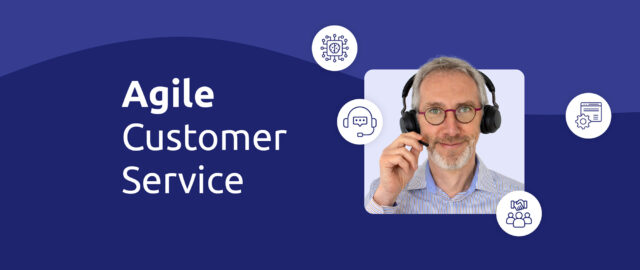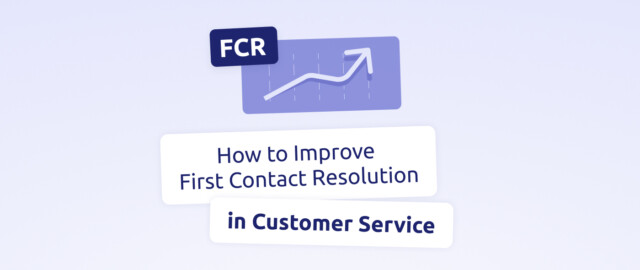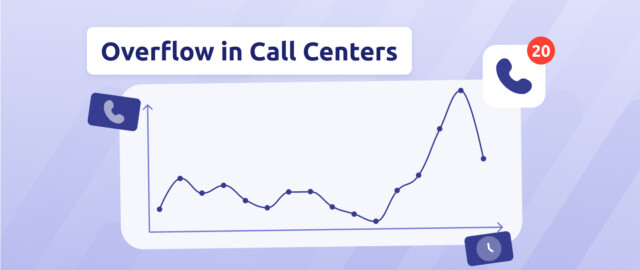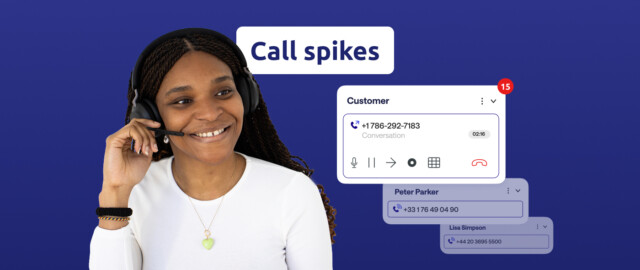Characteristics of Agile Customer Service
Agility has become the key to high-performing customer service departments. But how do you recognize agile customer service? What are the traits that set it apart from traditional service? Here are five characteristics of an agile customer service:
Customer-Centric Focus
The first marker of agile customer service is its obsession with customer satisfaction. Rather than relying on standardized scripts and canned responses, it focuses on active listening to understand the specific needs of each customer and provide a tailored response.
Its guiding principle? Responsiveness and personalization. With in-depth knowledge of products, processes, and high-performance customer relationship management (CRM) tools, agents can handle requests quickly and efficiently, adapting their approach to each customer profile.
Diabolocom’s platform, for instance, provides agents with a 360° view of the customer journey. Interaction history, preferences, and current contracts are all centralized to offer a smooth and personalized experience at every touchpoint.
Flexibility
Another key principle of agile customer service is flexibility. In a fast-paced world, it knows how to adapt to daily surprises: sudden spikes in activity, process changes, or new customer demands.
This agility relies on versatile, multi-skilled teams capable of switching between tasks without losing efficiency. It also depends on flexible, scalable technologies like cloud-based contact center solutions that allow real-time capacity adjustments, such as Diabolocom.

Collaboration
As mentioned earlier, agility requires adaptation. But to be truly responsive, information must flow efficiently between teams. This is why agile customer service prioritizes internal collaboration and communication.
This is achieved through instant messaging tools and document-sharing platforms, allowing agents to collaborate in real-time, assist with complex cases, and capitalize on best practices. Regular team meetings (briefings, debriefings, feedback sessions) also foster cohesion and skill development.
Diabolocom takes this collaborative dynamic to the next level with features like dual listening or integrated chat, enabling supervisors and agents to interact seamlessly throughout the day.
Innovation and Openness to New Technologies
Technologies such as quality monitoring, virtual agents, and call transcription are constantly opening new opportunities in customer service. An agile service stays at the forefront of these advancements without falling for mere trends.
The guiding principle is continuous improvement. An agile customer service constantly tests, learns, and adjusts its processes and tools to enhance efficiency and service quality. This innovation culture involves actively monitoring market trends and proactively engaging teams in the transformation.
Efficiency and Productivity
Finally, an agile customer service team is effective, constantly seeking to optimize performance. The goal is to resolve customer requests quickly and effectively, balancing response quality with agent productivity.
To achieve this, agile customer service relies on automation and self-service tools to handle simple queries autonomously without involving agents. Chatbots, voice bots, and knowledge bases are solutions that free up agents from low-value tasks, allowing them to focus on more complex, high-expertise interactions.
Diabolocom, for example, offers virtual agents capable of understanding natural language requests and responding appropriately in both written and spoken formats. This helps absorb a large portion of first-level inquiries, allowing agents to focus entirely on customer satisfaction.
4 Tips for Becoming Agile
How do you practically go about becoming an agile customer service? What levers can you activate to enhance responsiveness, flexibility, and efficiency? Here are some ideas to help guide your transformation:
Adopt the Right Technological Tools
To improve agility, it’s essential to rely on cutting-edge technology, starting with cloud-based contact center solutions. Unlike traditional systems, cloud platforms offer great flexibility and scalability to adapt to workload variations and new needs. To maximize the benefits, choose open, modular solutions that easily integrate with your business ecosystem (CRM, ERP, helpdesk) to deliver a seamless, personalized customer experience.
Automation is another key to agility. The idea is to delegate repetitive, low-value tasks (such as request qualification and basic queries) to conversational bots and self-service tools, allowing agents to focus on more complex, high-value interactions.
Finally, to improve responsiveness and relevance, it’s important to provide your teams with a 360° view of each customer’s journey. This requires tools capable of centralizing all data and interactions related to a customer and presenting it intuitively to agents through dynamic customer profiles. Diabolocom’s solution enables this.
Train and Empower Teams
Technology alone won’t make you agile. To sustain agility, invest in training and skill-building for your teams. The goal is to develop their versatility and comfort with key competencies like multichannel communication, digital tools, and managing complex interactions.
You can combine various training formats (in-person, e-learning, simulations). Don’t hesitate to implement personalized coaching systems, helping each agent hone their strengths and work on areas for improvement. This continuous learning approach is key to maintaining agility in the long run.
Another important factor in agility is empowering teams. This involves fostering more collaborative and cross-functional work methods, moving away from traditional hierarchical management structures. Encouraging initiative and allowing room for mistakes—combined with regular team rituals to stimulate collective intelligence—will strengthen agents’ engagement and their ability to adapt in real time to customer needs.
Collect and Leverage Customer Feedback
Agility is also about listening and continuous improvement. To evolve your customer service in the right direction, it’s essential to collect and analyze customer feedback continuously.
This can be done through regular satisfaction surveys after each interaction or at key moments in the customer journey. The goal is to measure perceived quality in real time and detect potential friction points.
But collecting feedback isn’t enough—you need to analyze it thoroughly and turn it into actionable insights. Semantic analysis tools can help automate feedback processing, making it easier to identify trends and act on them. Incorporating customer feedback into your improvement efforts is a sure way to make your customer service more agile and customer-focused.
Break Down Silos Between Departments
To boost agility, aim to break down the silos between your customer service and other departments. Strengthen communication and collaboration with marketing, sales, and product teams. The goal is to improve information flow for better understanding of customer needs and greater collective responsiveness.
Modern customer relationship management platforms enable this by breaking down interactions and facilitating seamless data sharing. By centralizing all customer information in a single repository, solutions like Diabolocom help align teams around a 360° real-time view of your customers.
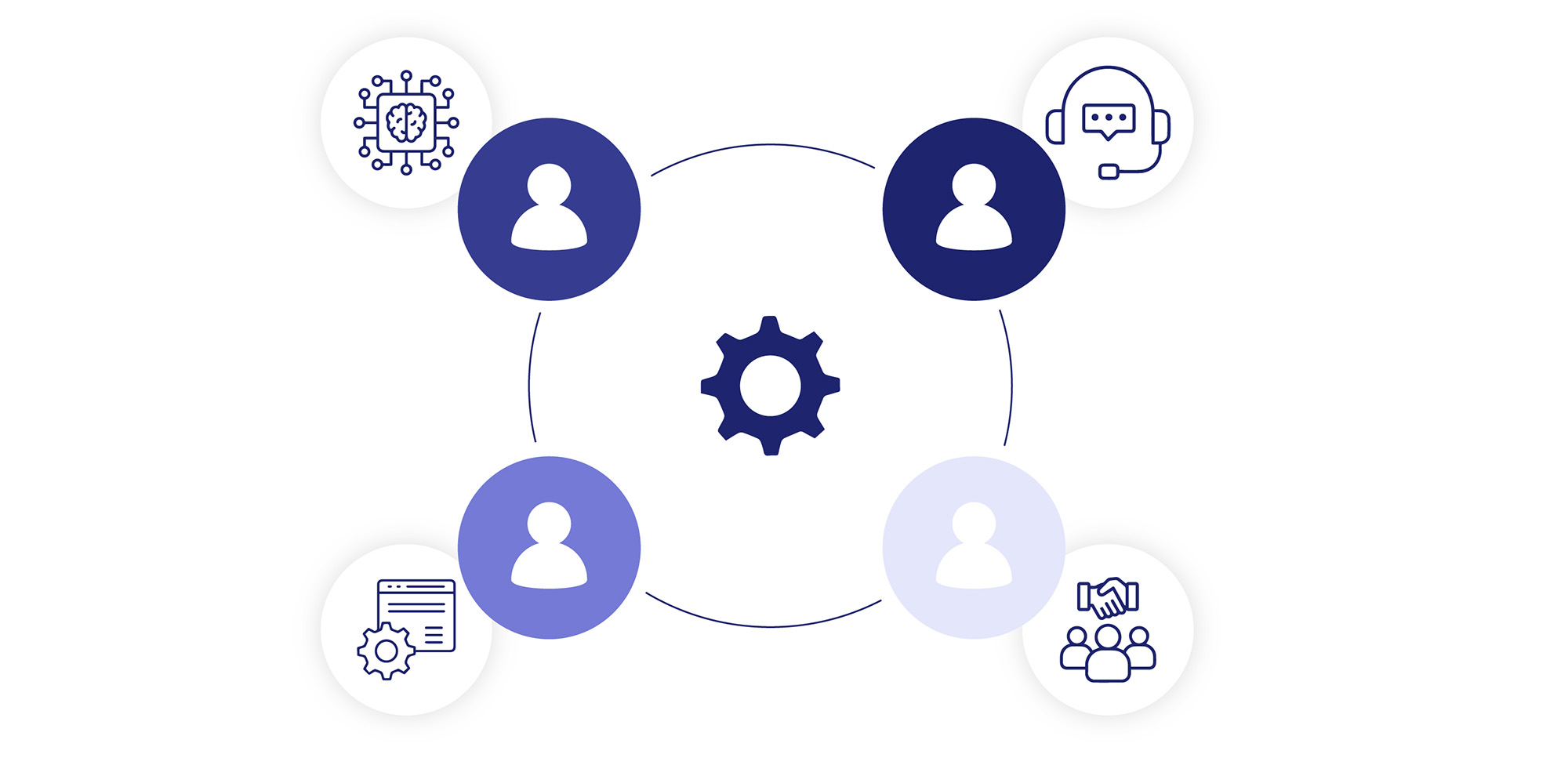
Conclusion
Adopting the right tools, investing in skill-building, leveraging customer feedback, and breaking down silos are all levers that, when combined, create a truly agile customer service.
However, beyond tools and processes, it’s a cultural shift that businesses need to make in order to embed agility for the long term. This involves making customer obsession a core company objective, championed at the highest levels and implemented across all departments.
Curious to know more about Diabolocom?
